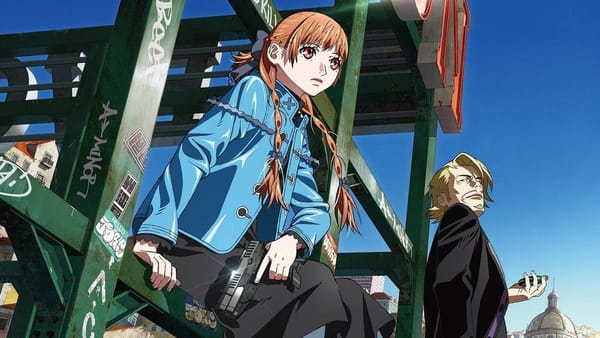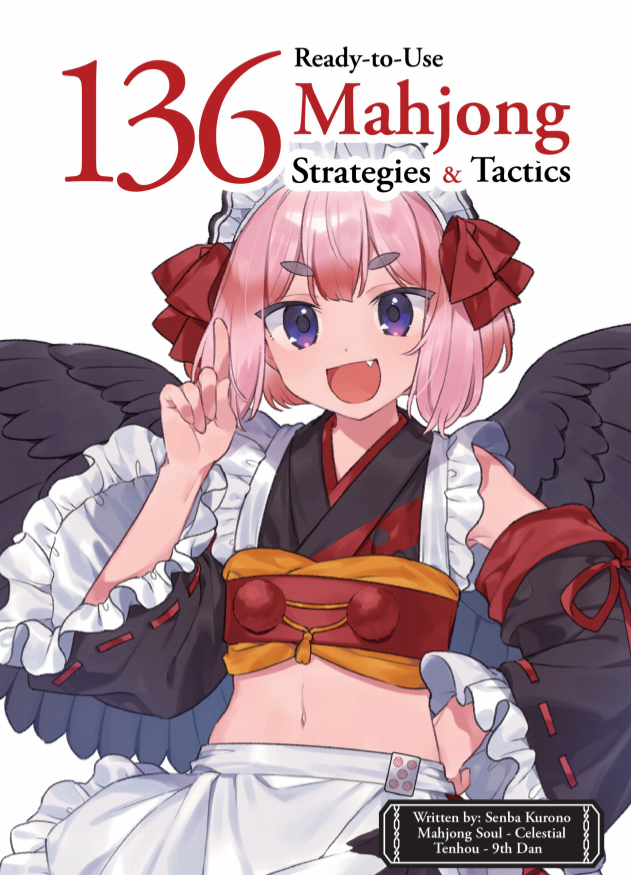Under Night In-Birth II remains the long-running sleeper gem of anime fighting games
IMMORTALIZE

Under Night In-Birth has been around for a while. Like, the first time I played Under Night was over ten years ago. It’s not quite an indie— the home versions have long had the publisher backing of genre titan Arc System Works— nor is it ever, with its hardcore gameplay and beautiful 2D pixel animation, likely to reach the mainstream gamer audience. Rather, developer French Bread’s Under Night series is the definition of a cult favorite.
Under Night is appreciated by connoisseurs for its aforementioned superb 2D art, moody anime atmosphere, and killer soundtrack. It is beloved by competitive fighting game players for its unique systems, fascinating design, and high learning curve. It carves out a space that is fully its own, one that no other game could or would ever replicate.
That momentum— helped very much by a sudden grassroots resurgence in the Western tournament scene— has quietly, steadily kept the Under Night series going for over a decade now.
And a decade is probably long enough to put a “II” on your game, right? But Under Night In-Birth II is not a ground-up new game, like Melty Blood Type Lumina: it’s the fourth incremental update in a decade to a game that’s already great.
What’s UNI like?
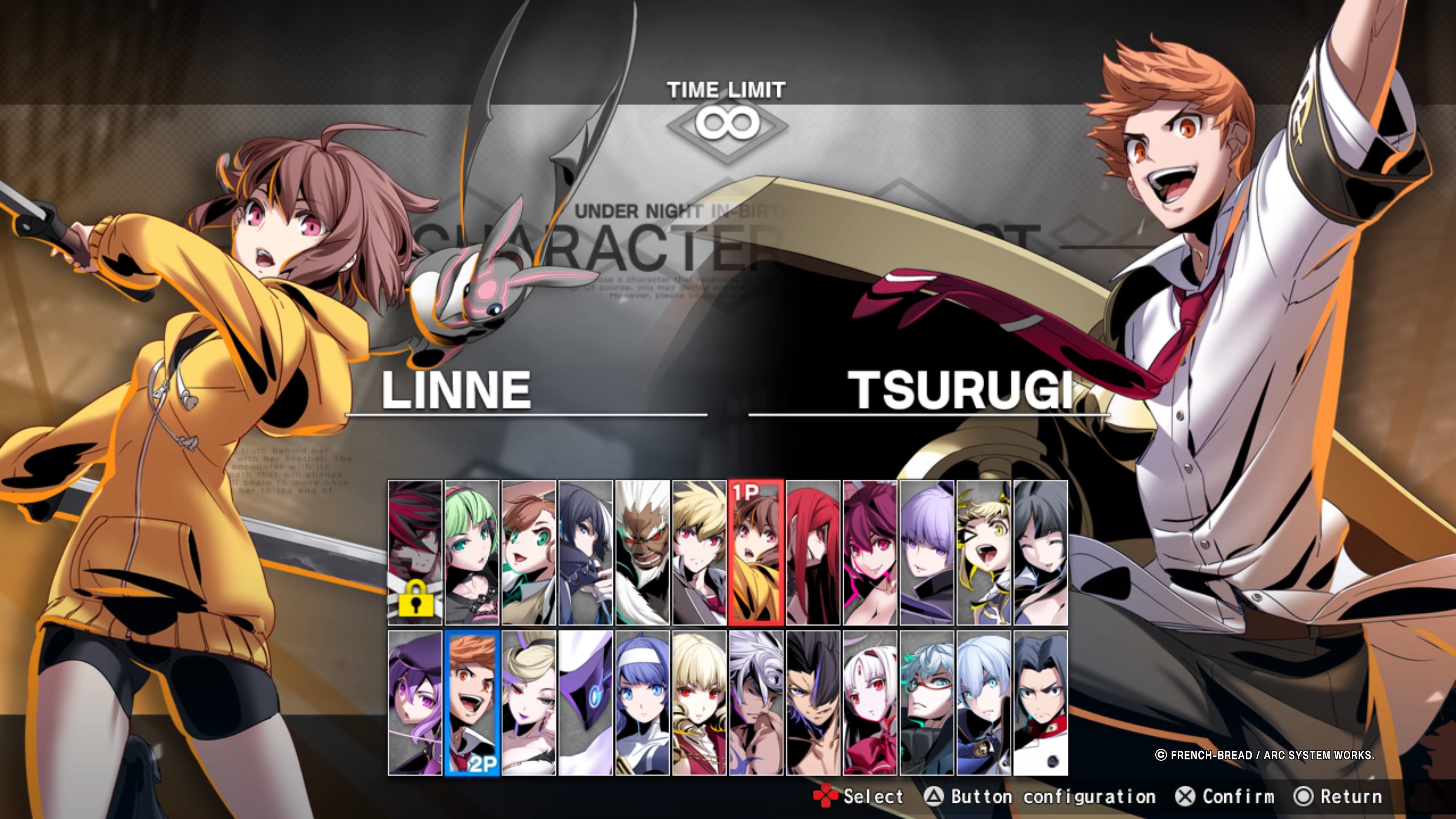
It is very easy to mistake Under Night for a typical “anime game”, with its cast of chuunibyou fighters with magic weapons and powers, but in truth there is no fighting game at all that plays quite like Under Night. It’s a particular inimitable combination of flavors that, for many players, hits just right.
Characters can’t jump, fly or bounce about the screen quite like they can in Guilty Gear or Blazblue: rather, movement is very deliberate and it’s dangerous to rush straight in. Players try to move around each other and jockey for position, the way they might in Street Fighter… but this is also a game where half the cast have swords or other weapons, and the typical attack range is quite long.
What is in keeping with typical anime games is the high level of up-close offense when players do get into range on each other. In Under Night characters can chain attacks into each other in any order they want at all,1 creating powerful barrages that are difficult to defend against or counter-attack. Land a hit and the extremely in-depth combo system takes over: this is a game where you must practice big combos off every possible hit to stand a chance at winning.
Finally, players fight over a unique resource in the center of the screen called GRD. Without getting overly technical, a clock runs throughout the match, and at every new “hour” a player is awarded a buff (the “Vorpal”) based on how well their offense or defense is going. Get too predictable on offense and you can unintentionally give your opponent the buff! This esoteric mechanic rewards both calculated aggression and patient, observant defense alike, making it a favorite with advanced players.
What’s new in UNI II?
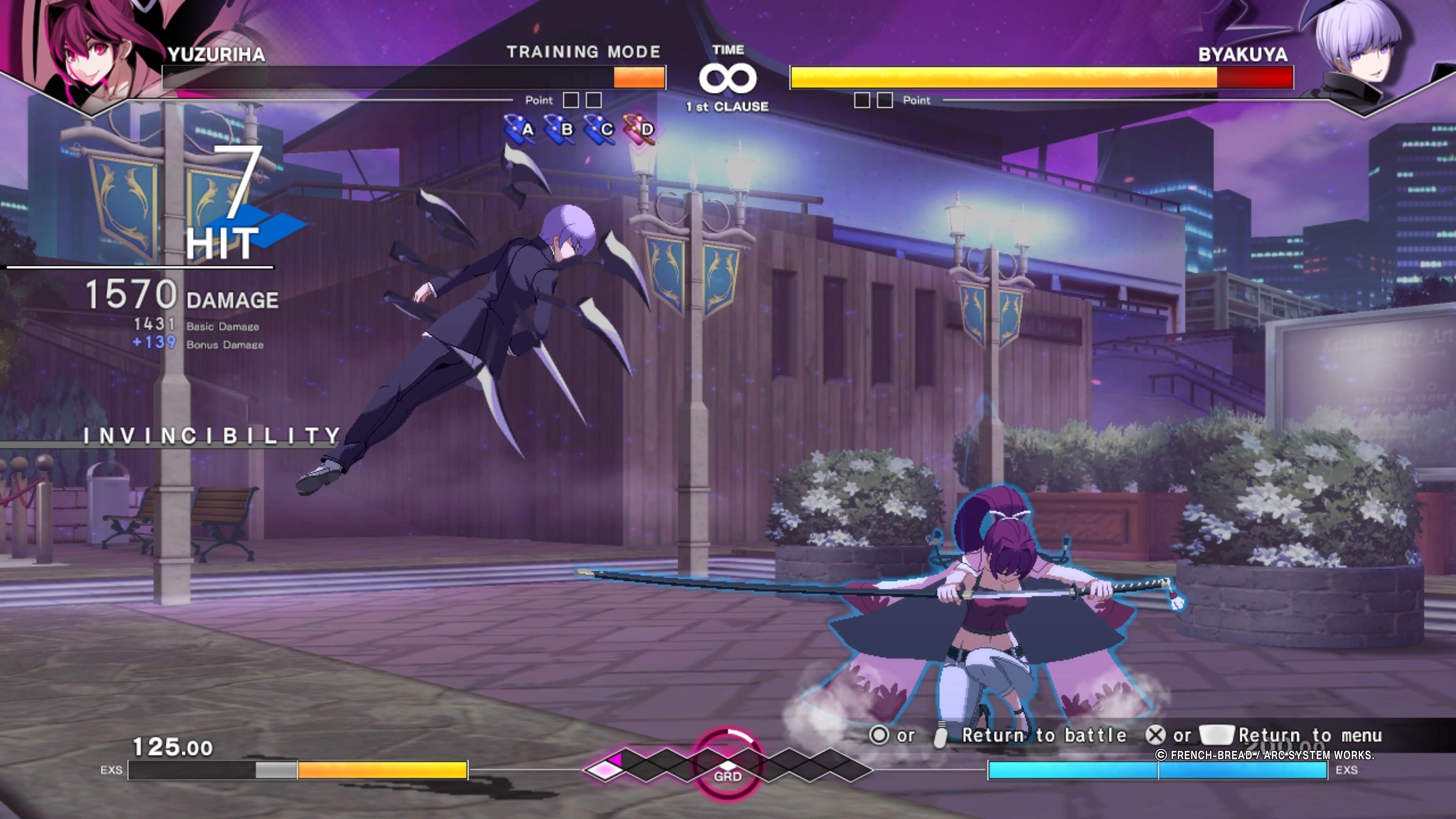
Probably more than I know. I didn’t play a ton of the previous Under Night revision (Under Night In-Birth Exe-Late:cl-r “UNICLR”)— it didn’t have rollback netcode, you see— so my point of reference was in fact the last Under Night that I put a lot of time into when I was still playing in tournaments regularly, “UNIST”.
Between then and now you can see quite a bit of expansion, refinement, and improvement for every single character. I had a good look around the roster, including characters I know like the back of my hand like Orie and Linne. Everybody has at least a few new tricks and animations: I can play those characters easily just the way I used to, but the new options and room for growth are apparent from just a few minutes in training. French Bread takes “new versions” seriously.
The UI has also gone through a bit of a glow-up: visually the game is a little more in line with French Bread’s more recent (and even prettier) Melty Blood: Type Lumina. Under Night was always moodily stylish, but the new splash screens— and the fully re-recorded soundtrack— are truly slick.
New character - Kaguya
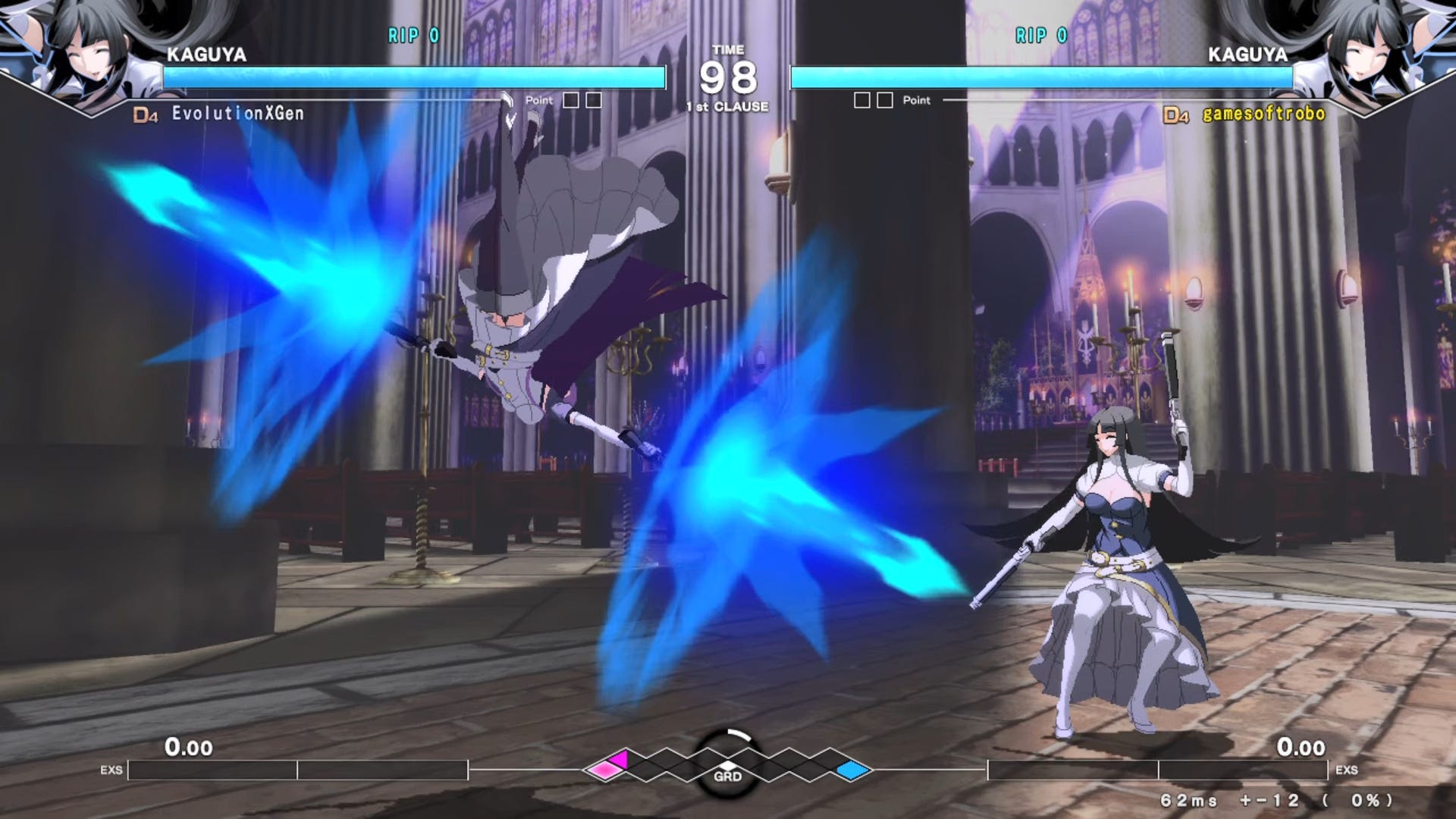
I was drawn to the new character Kaguya when I saw her gun-fighting style. Fighting games have cribbed the style from Equilibrium many times, and I’m honestly kind of a sucker for the impractical silliness of wielding a gun like a martial artist’s melee weapon. I feel it’s one of those things that only truly works in a video game. Airhead big-sis type gunslinger? Oh, even better. Let’s go.
Kaguya is a slippery and tricky offense-focused character who prefers to work from medium to long range. First things first, she has a pretty fast, full-screen beam attack that hits long-range on the ground. It’s easy to dodge— you can even crouch underneath it— but it’s fast and a really powerful way to keep opponents out.
In close, Kaguya has moves with very wide but also very specific areas of attack, so you want to keep her at medium-close range to use them. You’ve got to be pretty careful; it’s really easy for them to whiff and leave you open. On defense Kaguya has two invincible moves, including a very low-risk dodge, but her normals aren’t very fast and generally speaking your best defense is just to get away.
Once you start working out combos with the character, you start to realize that they all set up Kaguya’s other specialty, which is laying mines on the screen and forcing opponents to stand up as they explode. Kaguya has a fast and long-range air dash— highly unusual in this game— and can cause all kinds of confusion as you force the opponent to block both her mine explosions and her own cross-up attacks.
Overall a high-effort high-reward character; that is, higher effort than usual for Under Night.
The beta

This beta only consisted of practice mode and online play. With the advent of rollback, we have thankfully passed the era of “how’s the online?” in these pre-release betas; if they implemented rollback correctly it’s probably fine, and Under Night II’s online play is perfect.
It’s worth noting that UNI’s practice mode is the best in the business and probably nudged even major devs like Capcom and Arc to improve their own offerings in this niche. One of the cool things about UNI, in fact, is the amount of teaching material in the game. UNI has never really aimed at beginners, but if you have the will to give the game a try in all its glory, it has a full textbook’s worth of definitions, practice problems, and rule explanations where most fighting games put little to nothing and leave it to Discord.
Should I try it?
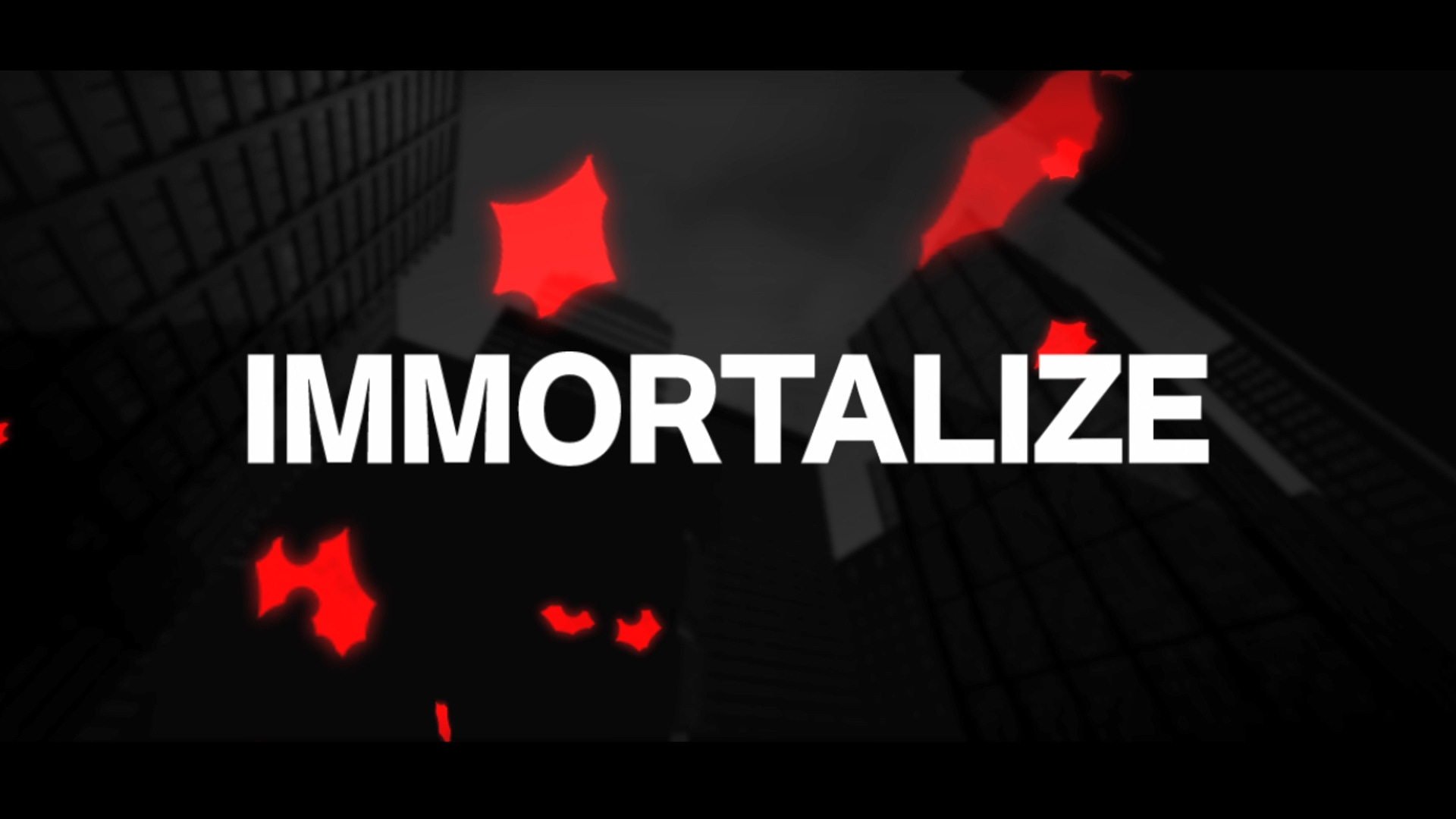
Yeah, this game rules, and everyone who doesn’t actually meet up to play fighting games in a tournament setting probably missed out on it. And since Under Night now finally has rollback, there’s probably never going to be a better time than the upcoming launch. Just don’t expect it to go easy on you, and make sure you don’t press any buttons on wakeup.
Like, I can start with a low heavy, go “backwards” in the order with a standing medium, go backwards again to crouching jab, then go all the way back up to standing heavy, then finish the string with stand jab to stay safe, for example. The “magic series” is out the window, it’s blockstring heaven. ↩

